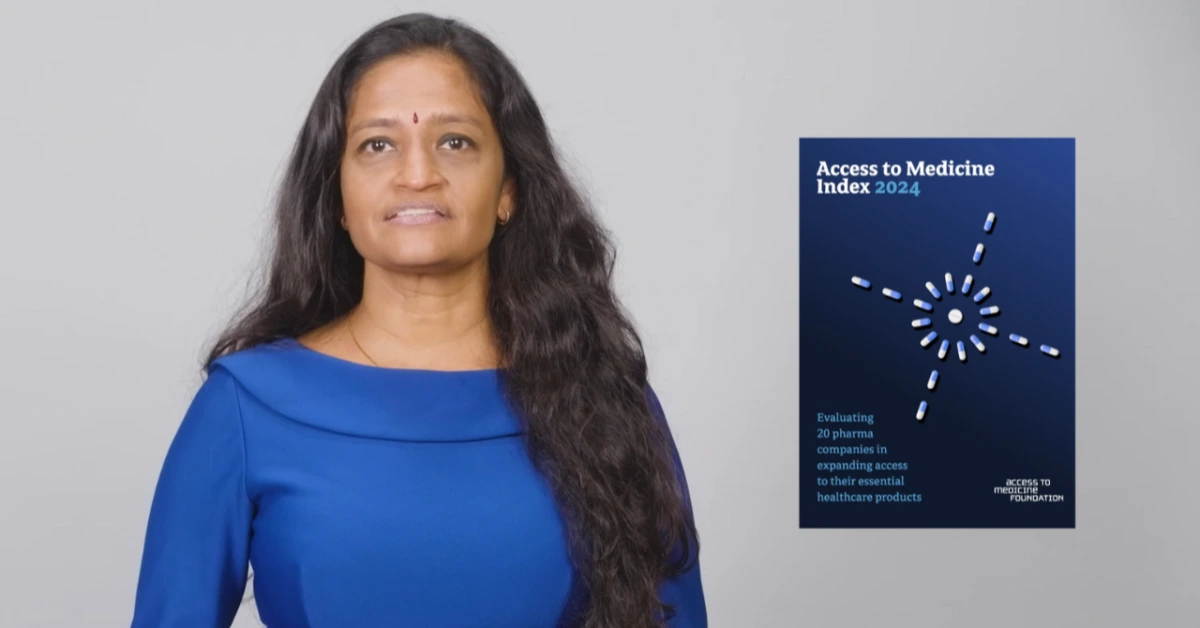
NETHERLANDS – Pharmaceutical giants have made minimal progress in ensuring affordable access to essential medicines in low- and middle-income countries (LMICs) since the COVID-19 pandemic, according to the 2024 Access to Medicine Index released Tuesday.
The report, which evaluates 20 of the world’s largest drugmakers, highlights slow and uneven improvements in making life-saving treatments available across more than 100 low- and middle-income countries (LMICs).
Although some companies, such as Pfizer, Novo Nordisk, and Bristol Myers Squibb, have initiated affordability programs, these efforts reach less than a quarter of their target countries, leaving critical gaps in healthcare access for billions of people.
Persistent gaps in global medicine access
The Index underscores the urgency of addressing inequities, with over two billion people, primarily in LMICs, still lacking access to essential medicines that have been widely available elsewhere for decades.
Despite representing 80% of the global population, LMICs host only 43% of clinical trials, and a mere 3.6% occur in low-income nations.
Dr. Jayasree Iyer, CEO of the Access to Medicine Foundation, emphasized the potential for greater impact:
“Companies could do a lot more to scale up their initiatives to make life-saving treatments accessible and affordable everywhere they are needed. Until that happens, many essential medicines and healthcare products will remain out of reach for billions.”
Key barriers to medicine access
1. Clinical trial disparities
Clinical trials remain concentrated in wealthier nations or upper-middle-income countries like China, Brazil, and South Africa.
Over 70 of the 113 nations covered by the Index lack active trials, perpetuating a cycle where pharmaceutical companies primarily register medicines in regions where trials are conducted.
“Since trials are conducted only in a few low- and middle-income countries, access plans are often confined to these regions, ultimately widening the access gaps instead of closing them,” explained Dr. Iyer.
2. Product registration gaps
Of the 179 products analyzed in the Index, nearly half remain unregistered in the top 10 countries with the highest disease burdens.
While 85% of these products are covered by affordability programs in upper-middle-income countries, this drops to just 39% in low-income regions, leaving critical health needs unmet.
“This low overall registration coverage of countries with high disease burdens means that products may not be available where people need them the most,” the report states.
3. Manufacturing shortfalls
Sub-Saharan Africa, which bears 20% of the global disease burden, remains heavily reliant on imports for pharmaceuticals.
While some technology transfer initiatives have been launched, these are overwhelmingly concentrated in emerging markets like India, Brazil, and China.
In Africa, 99% of vaccines are imported, and only South Africa sees notable local manufacturing investments.
Claudia Martinez, Research Director at the Access to Medicine Foundation, remarked:
“Right now, these efforts are heavily skewed toward upper-middle-income countries like China and India, leaving Africa behind.”
Evaluating industry initiatives
Five companies—Novartis, Novo Nordisk, Sanofi, Pfizer, and Bristol Myers Squibb—have launched inclusive business models (IBMs) to improve access in 102 LMICs.
However, implementation remains limited. Bristol Myers Squibb’s ASPIRE program, for example, operates in only 19 of its 85 target countries, and Pfizer’s Accord for a Healthier World covers just eight of 45 planned nations.
In contrast, longer-standing initiatives, like Novo Nordisk’s iCARE program, have shown more consistent results, now active in 17 of 46 countries.
Similarly, Novartis claims its products are accessible in “most” target countries under its program, though specific figures remain unavailable.
The call for action
Experts emphasize that the tools and partnerships necessary to close these gaps exist, citing the rapid global health advancements achieved during the COVID-19 pandemic.
“We’ve seen what’s possible when global health becomes a priority,” Dr. Iyer said. “The tools exist, and so do the partnerships. What we need now is sustained commitment and deliberate action to reach those who have been left behind for far too long.”
The report calls for:
Rankings reveal slow progress
Novartis topped the 2024 Index for the first time, with GSK dropping to second place.
However, even the highest-scoring companies fall well below the maximum score on a five-point scale measuring access efforts.
While the average score across all companies has risen by a third since 2010, significant disparities remain.
For instance, Gilead, a leader in HIV/AIDS treatment, has seen its score drop despite its pivotal role in global health.
David Reddy, Director of the International Federation of Pharmaceutical Manufacturers & Associations (IFPMA), acknowledged progress but emphasized the need for more decisive action:
“Despite these strides, the report underscores the need for accelerated efforts to close persistent gaps in access, particularly in low-income countries.”
Bridging the gap
As global threats like drug-resistant infections and potential future pandemics loom, the pharmaceutical industry faces mounting pressure to bridge these gaps.
Without targeted action, the disparity in access to essential medicines will continue to claim lives and deepen global health inequities.
“This imbalance is unacceptable,” Dr. Iyer concluded. “Every delay in expanding access to medicine translates to more lives lost and communities devastated.”
XRP HEALTHCARE L.L.C | License Number: 2312867.01 | Dubai | © Copyright 2025 | All Rights Reserved